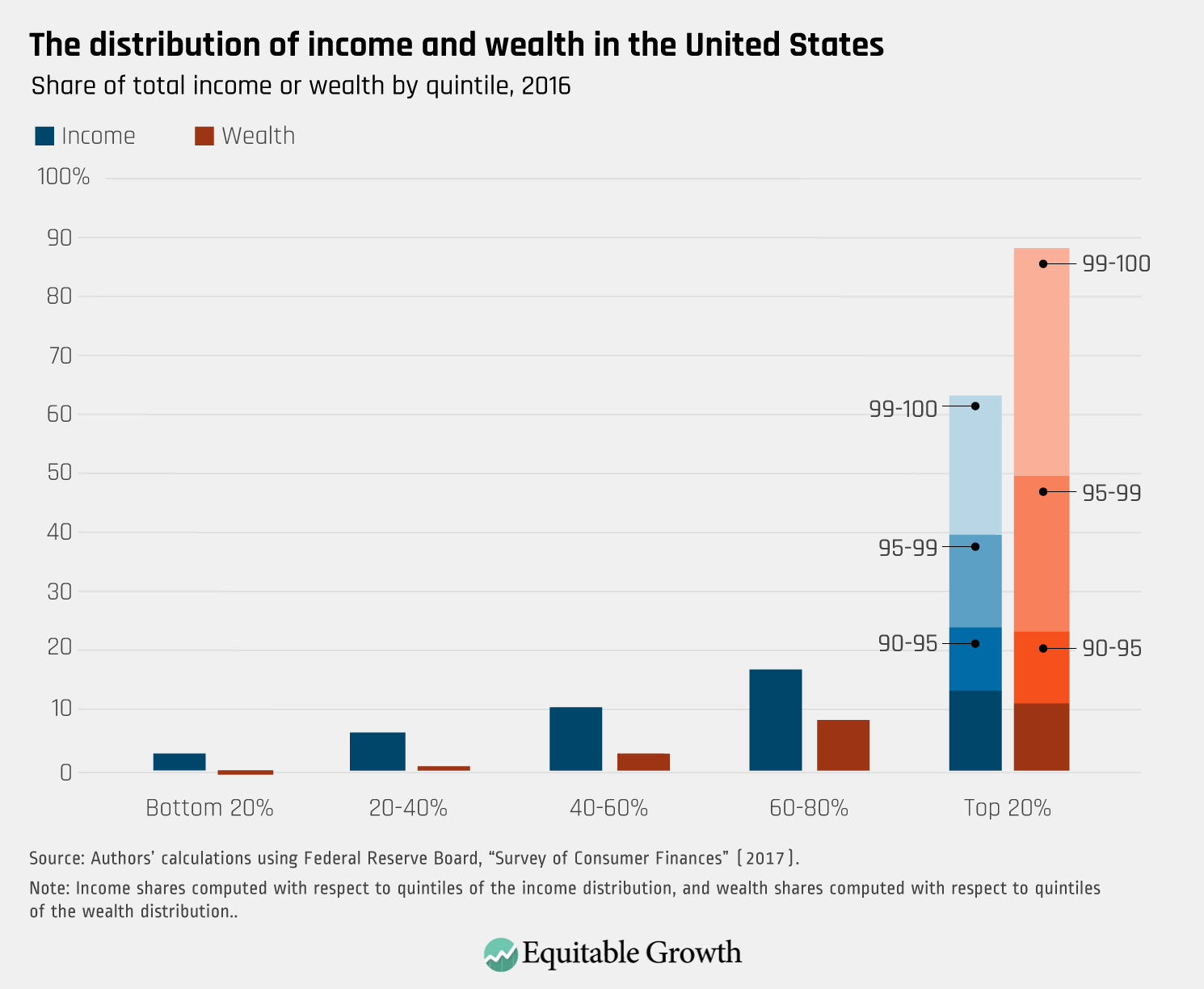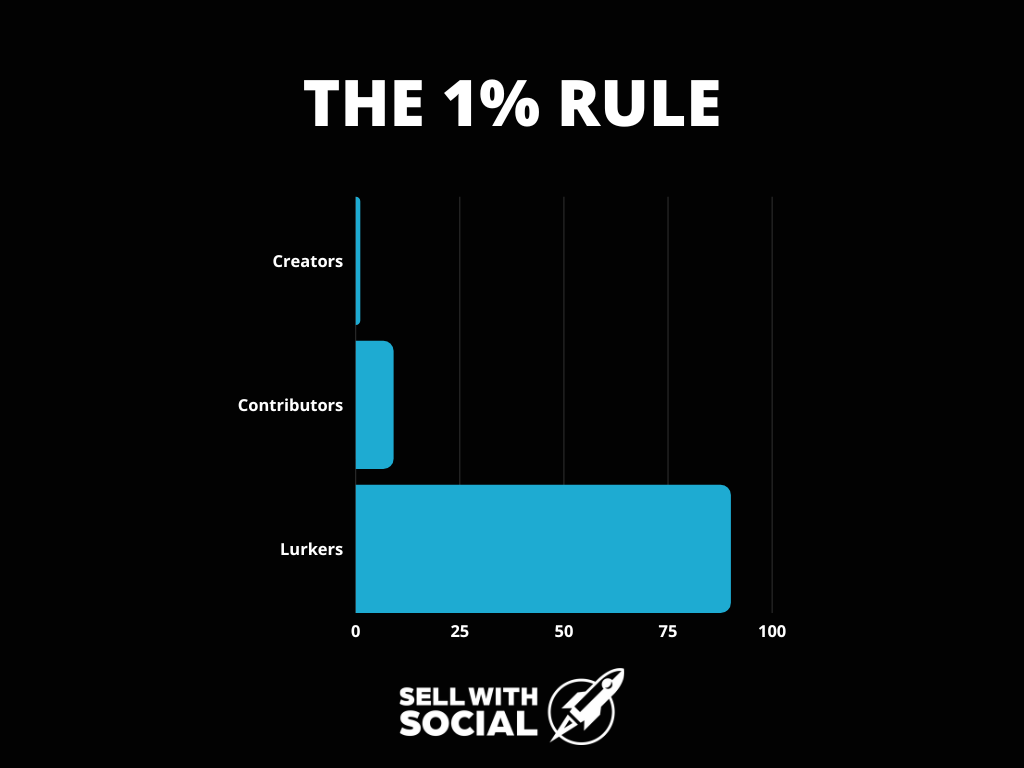Become a One Percenter
The creators and contributors are reaping the rewards of social selling.
Arising from the aftermath of the Great Financial Crisis, the Occupy Wall Street movement took hold. It was a populist movement that was grounded by the anger of the everyday person. The chant, “We are the 99 percent!” became a rallying cry as they positioned themselves against the 1%.
Who are the 1%? These are the top one percent of household wealth holders in the United States. As of 2019, these are households with a net worth of $11,000,000 or higher. These people hold dramatically more wealth than the bottom 99% of the population.
And at face value, the numbers don’t look good. It appears the 99% have reason to be angry at the 1%. When you view household wealth in the United States, it’s obvious there is massive inequality in its distribution.

And it’s not just the United States. Nearly every country in the world, including China, United Kingdom, and even Sweden, has notable inequality patterns in wealth. It’s normal to see 1% of the population own 40%+ of the wealth.
While we could write a whole other newsletter just on the dynamics of wealth inequality… that’s not the goal of this article. But what is relevant is the prevalence of distribution models and power laws.
Power Laws - All is Not Equal
At the heart of inequality in data sets are distribution models and the power laws that drive them.
According to Oxford Languages, power laws are “a relationship between two quantities such that one is proportional to a fixed power of the other.”
Or in other words, there is an exponential scale to the relationship between two quantities. For example, for every additional unit of length you add to a square, there is a 4X increase in its area.
Another famous power law is the “Pareto Principle” or the “80/20 Rule,” which states that 80% of the results come from just 20% of the causes.
Pareto Principle is often cited when analyzing revenue from customers. Many of us in the business world understand the common distribution that 80% of our revenue comes from just 20% of our customers. We can use this knowledge to better adapt our sales strategy.
In the case of Occupy Wall Street, household wealth inequality, and the existence of “the 1%” result from these power laws. This means that as unfair as they may seem in a society, these distribution patterns are natural based on the power laws that drive them.
Distribution in Online Communities - The 1% Rule
So what does this all have to do with social selling? A lot, actually.
In the world of online communities, there is a concept known as “The 1% Rule.” The rule states that 90% of users observe and do not engage, 9% contribute occasionally, and 1% of users create the vast majority of content.
Like wealth inequality, online communities have a standard distribution model where 1% of users create most of the content. These top users dominate their communities.

In a 2014 study, “The 1% Rule in Four Digital Health Social Networks: An Observational Study”, the authors studied four unique online communities and confirmed this general distribution. Reviewing 578,349 posts found that approximately 1.4% of posts were created by power users, 24% by occasional contributors, and 74.7% of users were simply lurkers.
While this distribution might not be as politically charged as wealth inequality, it still has massive implications for your ability to leverage social networks as part of your sales strategy.
Simply put - Being active with content on social networks puts you in the top 10% of all users. Even better, regularly posting new content puts you in the top 1% of users.
This is true on social media platforms like LinkedIn, as well as more niche platforms like online forums and chat groups. In each online community, the vast majority of users are simply observing and not engaging. While a small minority of users create content, send messages, and comment on others’ posts.
Becoming a One Percenter
To me, this smells like opportunity.
All the benefits of increasing your reach, building your authority, and generating new leads go to those willing to actively participate in social networks. The creators and contributors are reaping the rewards of social selling.
And while I can’t provide you with a simple method to become a member of the top 1% of household wealth, I can help you become “One Percenter” in the world of social networks.
You just need to start engaging.
To be a One Percenter, you must be willing to post content regularly and engage with your network. Show up every day. Comment on posts. Create new posts. Focus on adding value to your social network.
Do this long enough, and bam! You’re a one percenter.

The goal of this week’s action items is straightforward - you want to be in the top 10% of your social network. This means you are either a creator (top 1%) or a contributor (top 10%).
Here are the action items that you need to commit to:
- Create New Posts Weekly - Create and publish a new post at least once a week to your network. Focus on creating educational, entertaining, or inspiring content for your target audience.
- Comment Daily - Show up every day and comment on posts from others in your network. Engage in discussions and raise your visibility.
These simple actions will get you in the top 10% of social network users by an expected statistical distribution.
